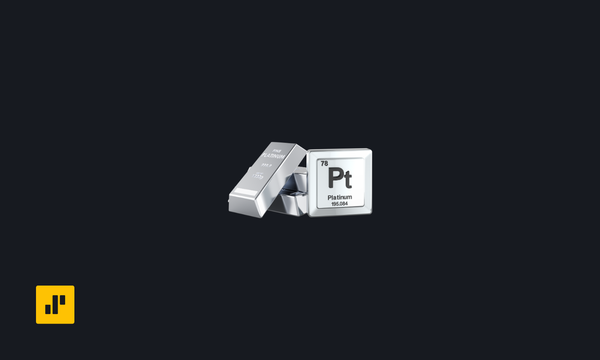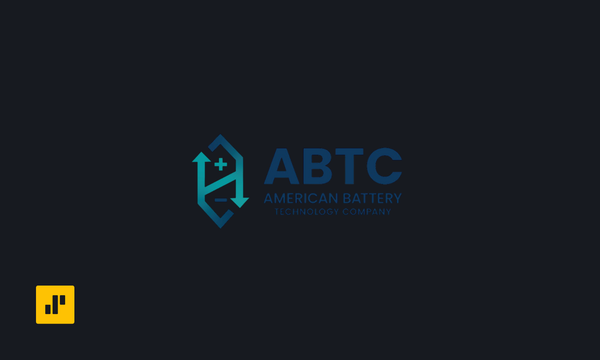Arweave Research Report

Originally published January 2023. After publishing this report, $AR moved from the published bid region ($4 - $8) to $49 (5x - 10x).
Thesis Statement
Arweave is a first mover in permanent decentralized data storage, a solution that fills a growing need in an explosive market. Increased demand for permanent storage will place increased demand on the AR token, which should have a positive impact on price over time as there is a fixed supply of tokens.
Abstract
Arweave is a blockchain-based storage platform that utilizes Moore's Law and blockchain technology to provide permanent, decentralized storage for users.
Users pay a one time cost denominated in $AR tokens, the native cryptocurrency that powers and incentivizes the Blockweave, Arweave’s blockchain. With a fixed supply, an increase demand for $AR tokens should result in price appreciation.
Demand for $AR should increase in correlation to the rapidly increasing demand for decentralized permanent storage, particularly within the NFT space, as Arweave is the only decentralized storage solution that offers permanent storage at scale.
Context
This is not a technical paper.
The purpose of this report is to understand Arweave at a level that helps us identify positive risk/reward investment opportunities based on supply and demand dynamics for the $AR token.
If you are interested in understanding Arweave at a more technical level, please see the Arweave wiki.
Overview of Arweave
Arweave is a protocol for creating the “permaweb”, a web where information, data, and applications are stored permanently and in a decentralized manner. Users can pay a one time fee in $AR tokens to store data on the Blockweave forever.
At first, it helps to think of Arweave’s Blockweave (Arweave’s blockchain like data structure) in two distinct parts: a storage layer and an execution layer.
⚠️Storage Layer
Arweave is a Decentralized Storage Network (think along the lines of Filecoin, Storj, Siacoin) that enables users to store data permanently. It connects and rewards users (miners) who have extra file storage space with users who have a need for decentralized storage.
The Blockweave is a blockchain based data structure.
The Blockweave permanently stores the “permaweb” a collection of applications, data, and websites that are accessible to users through traditional internet browsers like Chrome and Safari.
⚠️Execution Layer
Arweave’s Blockweave is also a smart contract network (just like Ethereum, Avalanche, Solana, etc.) that can execute code and applications stored on the Blockweave in a decentralized manner.
Arweave’s execution layer uses a consensus model called Proof-of-Access:

Unlike traditional blockchains where each block is connected to the previous block and next block in a linear fashion, Arweave blocks are connected to the previous block, the next block, AND a random recall block.
In order to earn block rewards through mining, miners must demonstrate that they possess data from both the previous block and a randomly selected block known as the "recall block."
If they cannot prove this, they will not receive any rewards. This is a consensus mechanism called SPoRA (Succinct Proofs of Random Access). The miner who mines a block is determined by factors such as storage capacity, computing power, and internet speed.
SPoRA utilizes Monero's RandomX consensus model, which was developed with the help of Arweave cofounder Sam Williams.
Miners can choose which blocks they want to store and do not have to store the entirety of the Blockweave to participate in mining.
The end result is the permaweb, a web that is visually identical to the traditional web, but permanently and immutably stored on the Blockweave.
Let’s take a look at some examples:

Mirror.xyz is the decentralized web3 version of Medium.
It’s a publishing platform for written content that is built on web3 technology like Arweave. Mirror.xyz stores all its published content on the Blockweave to ensure permanent and immutable access.


Solana NFTs
Arweave and Solana partnered to provide a decentralized permanent data storage solution of ledger data, ensuring the data can be always retrieved as required.

Why use Arweave?
In this section we’ll cover some of the core value propositions and use cases for Arweave.
Immutability & Permanence:
Let’s say you buy an expensive NFT. Do you want the metadata and image for that NFT stored in a database in an Amazon warehouse where it could be censored, lost, or otherwise tampered with? Or would you prefer to have it saved permanently on the Blockweave?
NFTs are not truly decentralized if they are stored in a centralized data warehouse. This is why many NFT projects have opted to store their NFT data on Arweave.
Anti-censorship:
Never has internet censorship been a more debated topic than it is now. A few large corporations control what is allowed to proliferate across the internet.
Arweave allows users to permanently store media that is prone to censorship by tech giants and/or governments.
In the last year, many content creators have been de-platformed from major social platforms like Twitter and YouTube, instantly losing their content libraries and revenue streams. There is an increasing push for decentralized social media platforms (like Lens Protocol) where decentralized storage options like Arweave are needed in order to maintain true decentralization.
Reliable Archive of Record
Link rot (also called link death, link breaking, or reference rot) is the phenomenon of hyperlinks tending over time to cease to point to their originally targeted file, web page, or server due to that resource being relocated to a new address or becoming permanently unavailable.
Did you know 49% of the links cited in Supreme Court decisions are broken and 30% of shared links are totally dead within two years across major social media platforms?
This is a serious problem that Arweave solves by being a reliable archive of record. Given the immutable nature of blockchains, information historically stored on the blockweave cannot be removed or altered.
Tokenomics (supply side)
Arweave’s native token, $AR, has a fixed maximum supply of 66,000,000 tokens.
55M $AR tokens were minted in the genesis block and 11M tokens were set aside for mining incentives.
Of the 55M minted $AR tokens, a large portion were sold to early inverstors and strategic partners including Andreessen Horowitz Coinbase Ventures, MultiCoin Capital, and other premiere crypto VC funds.
/w=48,quality=90,fit=scale-down)
AR Token Allocation
- Seed Sale: 9%
- Private Sale: 13.42%
- Public Sale: (ICO): 3.75%
- Strategic Partners: 5.42%
- Advisors: 2.42%
- Team: 10.83%
- Techstarts (incubator): 0.5%
- Adoption Incentives: 15.92%
- Project: 22.07%
- Mining Rewards: 16.67%
Most $AR tokens distributed to investors have been on 4-5 year vesting schedules since 2018, meaning most will be coming to an end soon.
The current circulating supply is 50.1M, or 75% of the total 66M tokens.
✍️Investing Principle
For long-term investing you can generally ignore any cryptocurrencies that have a circulating supply below ~70%, as the inflation caused by token emissions in most cases makes the token prone to severe price depreciation, especially in bear markets where there is not enough demand to offset supply.
There is surprisingly little transparency as to how much of the 11M $AR mining incentive tokens have been distributed, but some on-chain sleuthing indicates it’s likely ~1.4M have been distributed and there are still 9.6M $AR tokens left.
This would mean there are about 6.3M in $AR early investor token unlocks left.
Keep in mind this is speculative. We have reached out to the team to confirm these numbers and will update upon confirmation.
A portion of all transaction fees and storage payments are subverted to an endowment fund. This endowment is used to subsidize the network in times where the block rewards are not enough to cover the cost to maintain the network.
/w=48,quality=90,fit=scale-down)
$AR Token Incentives
In order for mining of the Arweave to remain profitable and sustainable over
time, the following basic principle must hold:
The reward emitted by the network at any given block must be greater than the sum value expenditure required to maintain the blockweave for that period.
While this constraint is naturally satisfied by consistent release of tokens
from the endowment (assuming a stable token price in fiat terms and accurate PGBB predictions), the protocol avoids releasing endowment tokens
when miners have already surpassed profitability through other means.
This mechanism further strengthens the economic stability of the network against
fluctuations in token price and storage medium pricing.
In order to achieve this stabilizsing effect, the mining reward mechanics only take from the endowment in instances where the value expenditure required to maintain the
blockweave exceeds the value emitted by the inflationary block reward, and
instantly-released transaction fees.
At the time of writing this, the $AR endowment has grown to ~45,000 $AR. You find this chart here. These 45,000 $AR represent roughly 0.07% of the total supply.

This endowment process acts as a quasi-token burning mechanism because of how long endowment tokens are locked for. The tokens are still distributed, but it is over a long period of time, and only when needed to subsidize mining rewards. Given the 11M in mining incentive tokens and the relatively small current size of the Arweave network, it is expected that it will be years before distribution from this endowment is needed.
Tokenomics (Demand Side)
In order to store data on the Blockweave permanently, users pay a one time fee (which goes to miners and the endowment fund) in $AR tokens.
One would think that this storage cost would be expensive, however, storage costs have been dropping at a pace of 30.5% per year for the past 50 years as storage technology is improved.
With this in mind, Arweave uses a conservative estimate of a 0.5% annual cost reduction per year to extrapolate the permanent cost of storage.
Currently, that cost is 0.193 $AR per GiB.
In dollars per gigabyte, that’s ~$1.71 per GB for decentralized, permanent storage.
Compared to the rest of the market, this is quite expensive at scale.
You can compare prices across storage solutions here.

You can get one TB of storage from Filecoin for $2.34 per year. That same TB is going to run you a one time fee of $1710 from Arweave.
Here is an outdated comparison of ArDrive (a front-end solution for Arweave storage) vs Dropbox and Google Drive from when Arweave storage was more expensive:

Keep in mind, the entry Dropbox package is $9.99/mo but gives up to 2TB of storage. This comparison assumes you only need 16GB.
So why would anyone pay this exorbitant amount of money for Arweave storage? The answer is in Arweave’s competitive advantage and key differentiator: permanence.
If you buy a generative art NFT (like a Tyler Hobbs Fidenza) for $137,000, do you want the image and metadata stored somewhere temporary and centralized? That’s an heirloom piece of digital art, to be handed down for centuries. What if Tyler Hobbs passes away and stops paying the AWS bill? What if Amazon Web Services goes out of business in 40 years?
Fidenzas are actually stored on IPFS, another decentralized storage system which is quite popular for storing the metadata for Ethereum based NFTs.
Here’s a great Twitter thread on the differences between IPFS and Arweave →
A few key points from the thread:
- The most common way to store data on IPFS, and to retrieve that data, is using pinning services.
- These services run a bunch of IPFS nodes, and charge a fee to upload and pin your data.
- Infura (pinning service) will delete your data from IPFS if it hasn't been accessed for 6 months. Pinata (another pinning service) will delete your data if you stop paying the monthly fee.
This is why Arweave has been such a popular option for NFT data storage. Centralized, temporary file storage completely defeats the purpose of NFTs.
Let’s pause for a moment as this concept may be confusing if you do not have a base understanding of what NFTs actually are and how they are stored.
Here is an excellent thread from Punk 6529 on the matter. →
Essentially, NFTs are just unique tokens that live on the Ethereum blockchain (or any blockchain for that matter) that point towards a file location somewhere.
That somewhere could be any file storage solution, centralized or otherwise.
💡Key Concept
The NFT (token on Ethereum) does not actually contain the image and JSON data. Just the file location (URI) where that data is actually stored.
Storing all that NFT data on the Ethereum network would bloat the Ethereum ledger.
So instead of storing it on Ethereum, those storage needs are outsourced to a storage provider selected by the NFT creator.
Arweave is the superior storage solution for NFTs because it is both decentralized AND permanent.
This is an incredibly important concept to understand because it is central to the entire thesis of $AR token appreciation. In order for $AR to move up in price, there needs to be demand for Arweave as a storage solution.
There is plenty of demand for cloud storage:
The global cloud storage market size is projected to rise from USD 83.41 billion in 2022 to USD 376.37 billion by 2029 at a CAGR of 24% during the forecast period.
There is also clear demand for decentralized storage as evidenced by the popularity of Filecoin, Storj, Siacoin, and IPFS.
But where Arweave is unique and has a competitive advantage is its ability to offer decentralized and permanent storage.
See, we have to ask the right question.
Is there demand for cloud storage? Yes.
But that is the wrong question.
Is there demand for decentralized cloud storage? Yes.
Again, wrong question.
Is there demand for decentralized permanent cloud storage?
This is the right question.
And a difficult one to answer considering how relatively new the technology is. Fortunately, there are a few signals that indicate that there is real demand for Arweave’s permanent storage storage solution.
Solana uses Arweave to store its entire blockchain ledger.
We were going to build our own storage layer, but when we interacted with the Arweave team, we realized that their protocol has some very nice properties, such as censorship-resistance, perpetuity, and decentralization. - Anatoly Yakovenko, co-founder of Solana
Arweave is also a premiere option for NFT storage on Solana courtesy of MetaPlex, which provides all the tooling needed for NFT creators on Solana.
✍️MetaPlex
Metaplex is a platform for NFT creators and developers on Solana. With over 22 million NFTs minted and over $3.6 billion in commerce, the top creators and game studios use Metaplex to create, grow, and engage their communities.
The MetaPlex storage documentation actually provides valuable insights into Arweave:



Arweave has also integrated as a storage layer for premiere blockchains including Ethereum, Avalanche, Polygon, Cosmos, Polkadot, and Near Protocol.
Ethereum’s documentation has Arweave listed as the only non-Ethereum storage option with blockchain based persistence while acknowledging that Ethereum itself is not realistically capable of storing large amounts of data.

Additional evidence for demand of permanent storage is Meta (Facebook) deciding to use Arweave for Instagram’s to store digital collectibles (NFTs).
Why would Meta pay a premium for permanent storage?
For one, they’ll probably pass the storage cost on to the creators.
But by choosing Arweave they avoid a potentially disastrous legal situation down years down the road where people have paid for NFTs that no longer exist (deleted, censored, lost, etc).
In order to sell digital goods or collectibles (NFTs), consumers need to be guaranteed that those collectibles will exist forever.
Bottom Line
Arweave is not a decentralized storage play. It’s a permanent storage play.
Arweave is the only decentralized permanent storage solution on the market. And the main source of demand for permanent storage at the moment is NFTs. Therefore Arweave is an NFT proliferation play, at least in the short-term.
Thus, the question to ask is, “Will the NFT space continue to grow at an increasing pace?”
The answer to this question is a resounding yes, as NFT development continues to expand into multiple use cases including gaming, fashion and wearables, art, DeFi, data, physical real estate, virtual real estate, events and ticketing, and music.
According to Statista, the NFT market revenues are expected to show an annual growth rate (CAGR 2023-2027) of 22.82% through 2027.
On a longer time horizon, NFTs should should permeate into other industries like healthcare, licensing, and advertising.
With or without NFTs, Arweave could be used to permanently store death records, legal records, court documents, identification documents, medical records, and more.
Risks
- Competitors may emerge in the decentralized permanent storage space.
- The market may reject the higher cost of paying upfront for permanent storage, valuing lower cost over permanence.
- Miscalculation of storage costs long-term lead to higher costs than expected for miners, potentially depleting the endowment. This is fairly unlikely considering the very conservative estimates Arweave is modeled on.
- Unforeseen hacks or exploits.
Valuation: Arweave’s market cap pushed as high as $4B in the 2021 bull market and currently sits around $0.4B as of January, 2022.
We believe that given most of the inflationary pressure (token unlocks & mining incentives) is in the past, $AR is likely to return to multi-billion valuations future crypto bull market cycles.
However, it is pertinent to employ risk minimizing techniques for entering positions based on current market circumstances such as identifying demand zones and oversold conditions (see chart below).






